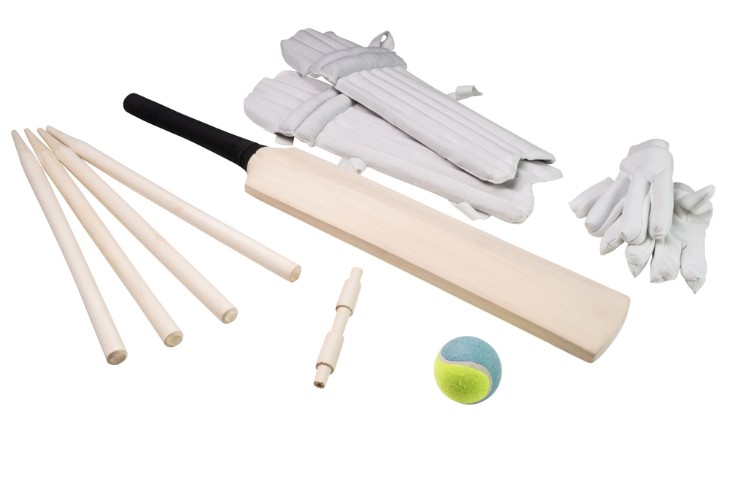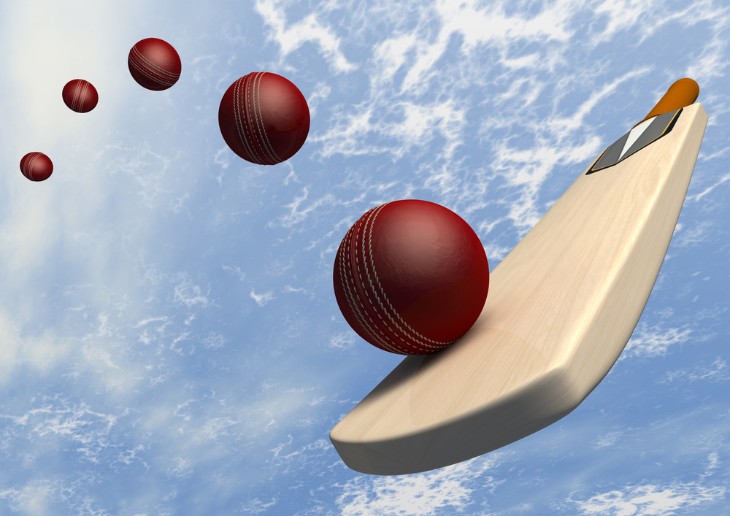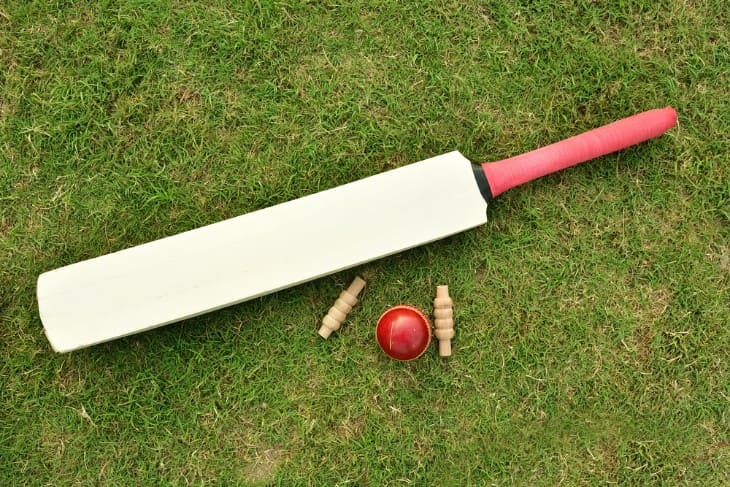Cricket bats have come a long way since the inception of the game in the 16th century. Initially, these bats were relatively crude and crafted from simple materials such as willow or ash. The willow cricket bat, which remains the preferred choice for professional players, gained prominence for its exceptional qualities.
Over the centuries, cricket bat design has undergone significant transformations, influenced by changing rules and player preferences. These changes have also impacted the materials used in bat construction. Understanding this historical context provides valuable insights into the present-day composition of cricket bats. As we progress in this article, we will explore how the materials used in cricket bats have evolved to meet the demands of the modern game, answering the question, "what are cricket bats made of?" in the context of today's cricketing landscape.
The Anatomy of a Cricket Bat
A cricket bat consists of several key components that collectively determine its performance on the field. The primary material used in the blade of the bat is willow, specifically English willow or Kashmir willow. English willow, often referred to as Salix alba caerulea, is the preferred choice due to its exceptional qualities. It is known for its lightweight nature, durability, and the ability to provide the perfect balance between power and control.
The handle of the cricket bat, on the other hand, is traditionally made from cane. Cane handles offer excellent shock absorption, which is vital for batsmen to have a firm grip and control over their shots. The combination of willow blade and cane handle forms the core structure of a cricket bat. Additionally, the handle is covered with a rubber or fabric grip to enhance the batsman's control during play.
Traditional Cricket Bat Materials
In our exploration of what cricket bats are made of, we turn our attention to the traditional materials that have been the foundation of cricket bat construction for centuries. Willow, as mentioned earlier, is the quintessential material for the bat's blade. English willow is the gold standard, known for its impeccable grain structure and performance. The grain structure of willow determines its quality, with straight, evenly spaced grains indicating a superior piece of wood.
Additionally, the handle of a cricket bat has traditionally been crafted from cane. Cane handles are valued for their ability to absorb vibrations and shocks from the ball, ensuring that the batsman maintains a steady grip on the bat. This combination of willow and cane, along with careful craftsmanship, has defined the essence of traditional cricket bat materials for generations.

Modern Materials for Cricket Bats
The evolution of cricket has brought about changes not only in playing styles and rules but also in the materials used for cricket bat construction. While traditional cricket bats are predominantly made from willow and cane, the demands of the modern game have led to the emergence of alternative materials. One of the key developments in recent years is the use of composite materials. These materials, which often include a combination of wood and synthetic elements, offer advantages in terms of durability and performance.
Fiber-reinforced composites, for example, provide increased strength without compromising on weight. Manufacturers have started incorporating these materials into the blade of cricket bats, allowing players to generate more power in their shots while maintaining control. Additionally, innovations in handle design have led to the use of materials like carbon fiber, which enhances the shock-absorbing properties of the handle. This modernization of cricket bat materials reflects the sport's adaptation to contemporary demands and competition.
Willow: The Preferred Choice
Willow wood, particularly English willow and Kashmir willow, continues to dominate the cricket bat industry due to its unique characteristics. English willow, derived from Salix alba caerulea, is renowned for its exceptional grain structure, which plays a crucial role in the bat's performance. Bats made from high-quality English willow are often sought after by professional cricketers for their responsiveness and balance.
Kashmir willow, while not as prestigious as English willow, offers a more affordable alternative. It is commonly used in mass-produced cricket bats and provides a suitable playing experience for amateur and club-level players.
The Willow Grading System
Willow grading determines the quality of the wood used in the bat's blade and plays a significant role in its performance. Typically, willow is graded based on the appearance and alignment of its grains. The highest quality willow exhibits straight, evenly spaced grains, while lower grades may have irregular grain patterns.
The top-grade willow, often referred to as Grade 1, is reserved for professional players and is known for its impeccable grain structure. Grade 2 and Grade 3 willow, while slightly lower in quality, still offer excellent performance and are popular choices among serious amateurs.
Manufacturing Process of Cricket Bats
The composition of cricket bats is not solely determined by the choice of materials but also by the manufacturing process they undergo. Craftsmanship plays a pivotal role in shaping the final product. To comprehend what cricket bats are made of, it is crucial to understand the steps involved in their manufacturing. The process typically begins with selecting the appropriate willow cleft, a piece of willow wood that will form the bat's blade. The selected cleft is then carefully shaped, with precise attention paid to the bat's dimensions, weight distribution, and balance.
Once the blade is crafted, it is attached to the handle, often made of cane or carbon fiber, to form the complete bat. The handle's grip is meticulously applied to ensure player comfort and control. Throughout the manufacturing process, quality control measures are in place to maintain the desired standards.
The Influence of Bat Design on Performance
The shape and design of a cricket bat impact how it behaves on the field. Bats are crafted with varying blade profiles, handle lengths, and weights to suit different playing styles and pitch conditions. The design also affects the sweet spot—the area on the bat that provides maximum power and control. Bats with larger sweet spots are highly sought after, as they allow batsmen to execute their shots with greater precision.
Modern bat designs often incorporate features like thick edges and high spines to maximize power, while still conforming to regulations set by cricket governing bodies. Innovations in bat design have led to the development of hybrid bats that combine traditional willow with modern materials, offering a blend of performance and durability.

The Role of Cricket Bat Regulations
Cricket governing bodies, such as the International Cricket Council (ICC) and national cricket boards, have established strict guidelines to ensure fairness and safety in the game. These regulations cover various aspects of the bat, including its dimensions, weight, and materials.
For instance, the MCC (Marylebone Cricket Club) dictates that the blade of the bat must be made of wood and that it cannot exceed a certain thickness. The handle must also meet specific requirements in terms of length and materials used. These regulations are in place to maintain a level playing field and prevent bats from becoming too powerful, which could potentially imbalance the game.
Caring for Your Cricket Bat
While it is important to know what cricket bats are made of, it is equally crucial to understand how to care for them to ensure their longevity and optimal performance. Cricket bats, particularly those made from willow, require proper maintenance to withstand the rigors of the game. Willow is a natural material, and its performance can be affected by factors such as moisture, temperature, and usage.
To care for your cricket bat, it is advisable to store it in a cool, dry place when not in use. Excessive moisture can cause the wood to swell and potentially damage the bat. Conversely, extreme dryness can lead to cracks. Regular oiling of the bat, using linseed oil, helps to maintain its moisture content and prevent it from becoming too dry. Additionally, inspect the bat regularly for any signs of wear, such as cracks or splinters, and address them promptly to prevent further damage.
Proper care also extends to the bat's grip, which can wear out over time. Replacing the grip when it becomes worn or slippery is essential to maintain a good hold on the bat.
Conclusion
In conclusion, understanding what cricket bats are made of is not merely a matter of material composition. It involves a comprehensive grasp of the materials, craftsmanship, design, and regulations that collectively shape these essential tools of the game. The choice of materials, such as the quality of willow and the use of modern composites, impacts a bat's performance and durability.
Moreover, the design of a cricket bat, including its shape and sweet spot, plays a pivotal role in how it performs in different playing conditions. The regulations set by cricket governing bodies ensure fairness and safety in the sport while setting standards for bat construction.
For more information:


